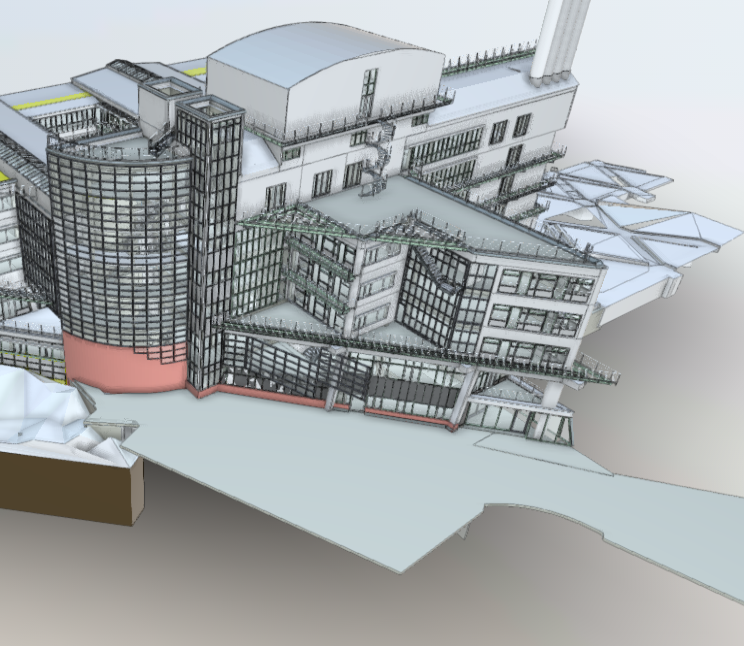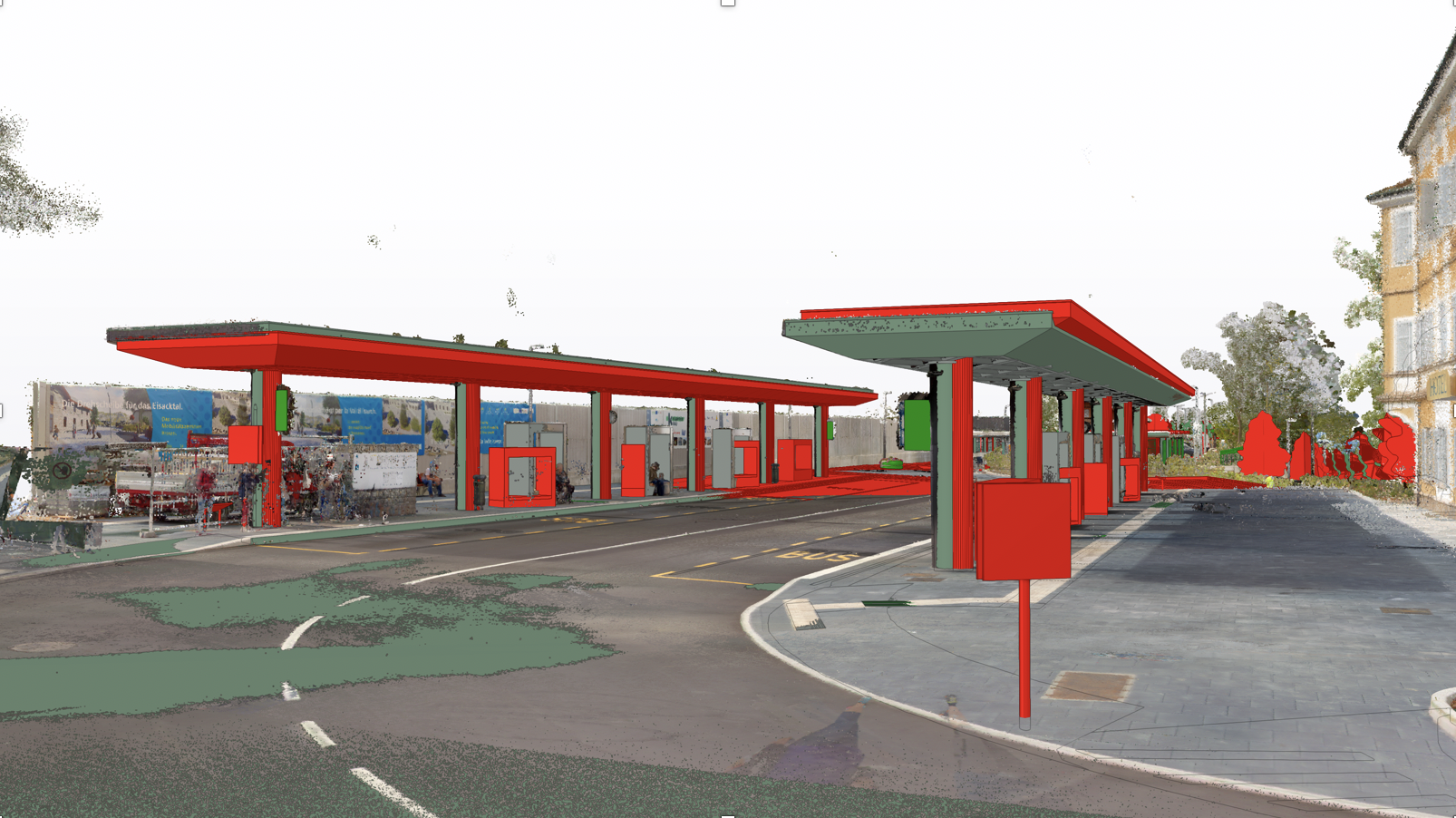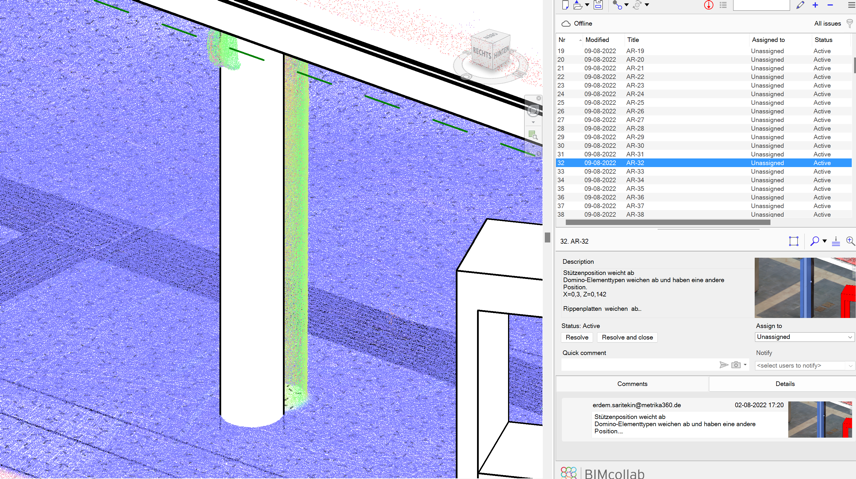The construction industry is on the brink of a digital revolution: Building Information Modeling (BIM) is no longer just a trend but is increasingly becoming the norm. However, many architectural firms and construction planning companies face a significant challenge: How to efficiently integrate BIM into their business when the necessary know-how is lacking or internal capacities are insufficient?
This is where outsourcing comes into play. Strategic outsourcing not only saves costs but also brings much-needed expertise into the company. In this article, we explore how businesses can work more efficiently and enhance their competitiveness by leveraging external BIM experts.


Why is BIM so important?
BIM is more than just software or a 3D modeling method. It is a holistic approach that maps the entire lifecycle of a building—from planning and construction to operation. BIM enables:
- More efficient planning by identifying design errors early on
- Better communication among all parties involved through centralized data models
- Cost and time savings by optimizing processes
- Sustainability through resource-efficient planning
However, transitioning to BIM requires specific expertise and experience that many architectural and planning firms cannot readily provide.


Challenges of BIM Implementation
Many companies face the same challenges when implementing BIM:
Lack of trained personnel
BIM requires specialized professionals who are not always easy to find.
High initial investments
Training, software licenses, and new workflows incur high costs.
Lack of experience
BIM is complex and requires expertise in implementation and application.
Capacity bottlenecks
Internal teams are often already stretched thin with ongoing projects and cannot take on the additional burden of adopting new methods.
Outsourcing presents a pragmatic and effective solution to these challenges.
Integrating BIM Know-How Through Outsourcing
Instead of investing years in building in-house BIM expertise, companies can strategically leverage external knowledge. Outsourcing BIM services offers several advantages:
- Instant access to experts: External specialists bring years of experience directly into the company.
- Scalable flexibility: Companies can engage external BIM professionals as needed without creating permanent positions.
- Cost control: Instead of bearing high fixed costs for training and personnel, companies only pay for what they actually need.
- Internal training opportunities: Collaborating with external experts allows internal staff to gradually build BIM knowledge.
- Error minimization: Experienced BIM professionals help identify and prevent design errors early on.


Which BIM Processes Can Be Outsourced?
Damit Outsourcing in der Architektur effizient funktioniert, müssen Architekturbüros ihre internen Prozesse neu strukturieren. In traditionellen Arbeitsmodellen übernehmen einzelne Mitarbeitende oft eine Vielzahl an Aufgaben – von der Detailplanung bis zur Kundenkommunikation. Diese breite Zuständigkeit erschwert jedoch die Einbindung externer Spezialisten und führt häufig zu ineffizienten Abläufen. Um eine reibungslose Zusammenarbeit zu gewährleisten, ist es daher essenziell, klare Trennlinien zwischen kreativen Kernaufgaben und technischen Umsetzungsprozessen zu ziehen.
1. Creation of detailed 3D BIM models:
- Processing of existing data: Converting point clouds or existing 2D plans into accurate 3D models.
- Detailed execution planning: Integrating all technical details, materials, and specifications into the model.
2. Model-based quantity take-off and cost estimation:
- Automated quantity take-off: Extracting material and quantity data directly from the BIM model.
- Cost estimation: Using extracted data for accurate budget planning and bid preparation.
3. Simulations and visualizations:
- 4D construction scheduling simulation: Linking the 3D model with the construction timeline to visualize project progress.
- Energy and sustainability simulations: Analyzing energy consumption and the environmental impact of the planned building.
4. Clash detection and quality assurance:
- Collision check: Identifying and resolving conflicts between different trades in the model.
- Model checking: Ensuring compliance with standards and guidelines through regular quality checks.
5. Optimization of existing BIM workflows:
- Process analysis: Evaluating and improving current BIM processes to increase efficiency.
- Implementation of new tools and technologies: Introducing advanced software solutions to support BIM workflows.
By outsourcing these tasks, companies can benefit from the expertise of specialized service providers, conserve internal resources, and focus more on their core competencies. This leads to higher efficiency, cost savings, and improved project quality.
Outsourcing allows architectural firms and planning offices to gradually expand their BIM workflows without taking on significant risks.


Step-by-Step Guide to Successful BIM Integration Through Outsourcing
The use of external BIM experts should be strategic in order to maximise the benefits. Here is a tried and tested roadmap:
Analyze needs
Which BIM tasks can and should be outsourced? What internal resources are already available?
Find suitable partners
Select experienced BIM service providers who are familiar with relevant standards and norms.
Start with pilot projects
Begin with smaller projects to gain initial experience and adjust processes accordingly.
Promote internal training in parallel
Internal teams learn step by step through collaboration with external experts.
Plan long-term integration
Strategically incorporate outsourcing into the overall business strategy.
Conclusion: Outsourcing as a Catalyst for BIM Transformation
BIM is the future of construction planning—but not every company needs to immediately establish a fully trained in-house BIM team. Outsourcing not only bridges short-term capacity gaps but also brings long-term know-how into the company. With the right partners, BIM becomes an efficient, scalable, and cost-effective solution that can revolutionize day-to-day work in architectural and planning firms.
Would you like to learn how your company can optimally integrate BIM know-how through outsourcing? Let’s discuss it!
